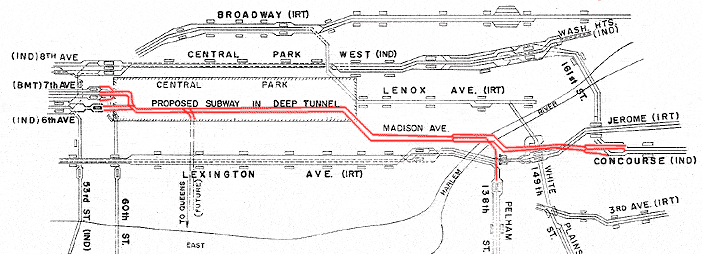
Page 16

In 1955, the portion of the Third Avenue el in Manhattan came down. No subway replaced it. In 1973, the portion of the Third Avenue el in the Bronx came down. No subway replaced it. After decades of discussion, and even the tease of a groundbreaking in the 1970s, New York still does not have a Second Avenue subway in 2001. The 1970s project actually produced two tunnel segments (but no stations) and work on a segment on the Lower East Side that had to be filled in. New York's fiscal crisis ended that effort. Crowding is terrible on the Lexington Avenue subway, as well as on virtually every subway line in Queens.
A Glimmer of Hope
Will New York ever build a subway to replace the old Second Avenue el? Actually, it might. Many of the attitudes that killed the Second Avenue subway in the 1940s have changed.
In the case of the Bronx, the el was of interest to such a local area, that supporters of the el could not even win allies borough-wide, much less city-wide. In the case of Queens, support for the el was widespread and well-organized, but ultimately conflicted with the also locally-based desires of the First Avenue Association. Neither tearing down the el -- in order to beautify part of Manhattan -- nor leaving it in operation -- in order to serve Queens -- would represent citywide public interest. Rather, the First Avenue Association proved more influential and better connected than similar organizations in Queens, and thus its desires prevailed.
The Second Avenue el fell, therefore, not only because it was ugly, unprofitable, and in the way, but because the groups that liked it were less influential than those that disliked it.
Residents of Second Avenue no doubt wanted the Second Avenue subway to be built -- after all, the nearby Third Avenue el and Lexington Avenue subway were hopelessly overcrowded. These residents, however, would have trouble winning support in other neighborhoods for an expensive solution to their seemingly local transit problem.
The cliché that "history repeats itself" is unfortunately true with regards to the Second Avenue el.

Poor Compromise, 1960s. If you were to ask the question: "Is the most compelling reason for a Second Avenue Subway to provide added service to the East Side of Manhattan, or to provide more capacity for The Bronx and Queens"? this plan argues for the latter. A relatively cheap way of adding an uptown mainline, it would have tunneled deep under Central Park. In the process, there would be no additional East Side service at all, except north of 110th Street. It contemplated adding capacity to the Concourse Line, in an already well-served corridor, and would have created the oddity of a Pelham Bay Line with IRT locals and BMT-IND expresses, an operational nightmare. This plan sank almost as quickly as it was floated.
Updated
©2001 Alexander Nobler Cohen. ©2001 The Composing Stack Inc. All rights reserved